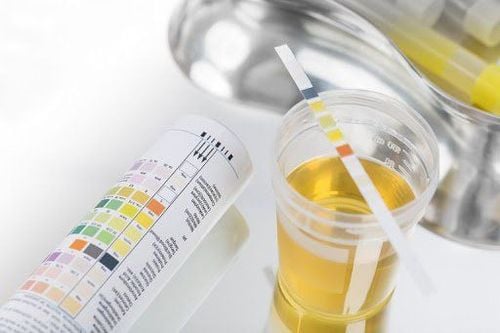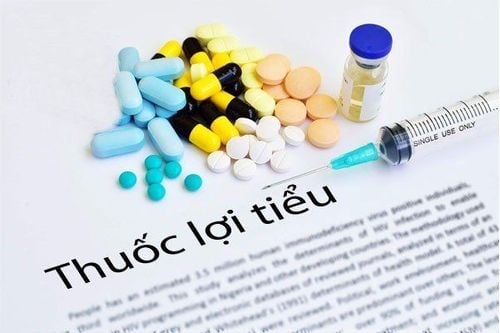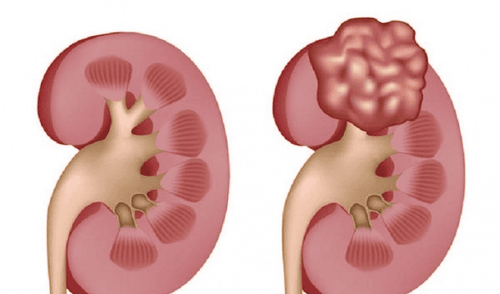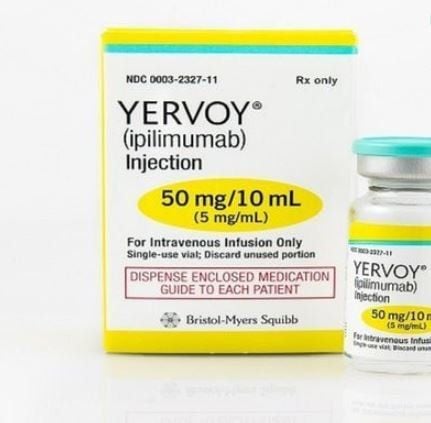This is an automatically translated article.
Kidney biopsy is the gold standard for diagnosing kidney damage, to determine the severity of kidney disease or to assess the response to treatment. You may need a kidney biopsy if you've had a kidney transplant but your kidneys aren't working properly.1. Cases in which a kidney biopsy is indicated
A kidney biopsy is done by inserting a long thin needle through the back (hip) area into the kidney. This procedure is called a percutaneous kidney biopsy. Radiologists often use ultrasound or computed tomography (CT) guidance to insert instruments into the kidney.Cases requiring a kidney biopsy include:
Blood in urine; Excessive proteinuria, other signs of kidney disease are elevated or accompanied; Diagnose a kidney problem. Help develop a treatment plan based on the condition of your kidneys. Determine the extent of damage due to kidney disease or other disease. Assess how treatment for kidney disease is. Find out why a transplanted kidney isn't working properly. Glomerular disease group: Nephrotic syndrome, rapidly progressive renal failure of unknown cause, systemic disease with renal damage, renal cancer, acute renal failure of unknown cause, persistent microscopic hematuria with proteinuria, Persistent proteinuria > 1g/24 hours... Group of renal tubular diseases suspected due to chemical toxicity, drug...
2. Contraindications for kidney biopsy
Late stage chronic kidney disease when the kidney has atrophied (Size of the kidney is < 9cm). The patient has only one kidney. Blood clotting disorder. Low platelets < 150,000 G/l, low prothrombin rate < 70%. The patient is in a state of infection and toxicity. Severe hypertension. Acute pyelonephritis, polycystic kidney, hydronephrosis. The patient has vasculitis and aneurysm.
Bệnh thận mạn giai đoạn muộn khi thận đã teo có chống chỉ địnn thực hiện kỹ thuật này
3. Steps to prepare for a kidney biopsy
3.1 Patient preparation The patient will be instructed to abstain from eating or drinking for eight hours prior to the biopsy. However, patients can still take their usual medications with a little water. Before the biopsy, the patient must inform the doctor of all the medications he is taking and any allergies, especially allergies to anesthetic drugs. The doctor will ask the patient to stop taking aspirin or blood thinners for three days before the procedure. In addition, patients should also inform their doctor of other recent medical conditions or medical conditions. At the inpatient ward, the patient will be asked to change into a hospital gown and receive an intravenous line before being transferred to the Department of Diagnostic Imaging. Several blood tests must be done before a kidney biopsy to determine if the patient has any bleeding problems or clotting disorders. Patients should be accompanied by a relative or friend to take them home after the procedure. Patients and their families listen to the doctor carefully explain the effects and complications of the procedure. The family signs the consent form for the procedure. 3.2 Performers and facilities: 02 doctors, 01 nurse or nephrologist.Facilities:
Ultrasound machine with 3.5 - 5 MHz transducer (possibly with a special probe for biopsy). Set of sterile plastic bags wrapped with transducers Biopsy gun: 01 special needle for kidney biopsy: 01 medicine, chemicals, tools.
4. Steps to conduct a kidney biopsy
Step 1: Check recordsCheck the tests done.
Step 2: Check the patient
Compare name, age, diagnosis.
Step 3: Perform the technique
Test response with lidocaine anesthetic. Monitor pulse and blood pressure before the procedure. The patient is lying prone on the table, legs stretched: The doctor washes his hands, wears sterile gloves Disinfect the skin on the back to be biopsied. Ultrasonic positioning to locate the kidney biopsy site Anesthetize the area to be punctured with a fine needle Insert the biopsy needle into the lower pole of the transplanted kidney under ultrasound guidance. When the biopsy needle has entered the biopsy area, a piece of kidney tissue is removed. Withdraw the biopsy gun, take a piece of kidney tissue and put it on a gauze soaked in physiological saline to send to the Department of Pathology for immunofluorescence testing. After removing the gun and biopsy needle, the biopsy site must be firmly pressed to stop bleeding. For the second biopsy, the biopsy piece was sent to the Department of Pathology for examination under an optical microscope. Press the biopsy site to stop bleeding for 5 minutes. Ultrasound examination of the kidney after the biopsy. Bandage firmly on the biopsy area and place the patient in a supine bed immobile for 24 hours.
5. Follow-up after kidney biopsy

Sau sinh thiết, người bệnh cần được cho làm xét nghiệm tổng phân tích nước tiểu ngay khi đi tiểu được
6. Kidney biopsy results
Biopsy results from the pathologist will be available within about a week. In an emergency situation, a full or partial report may be available in less than 24 hours. During your next visit, your doctor will explain the results. The results can further explain what's causing the kidney problem, or can be used to plan or change treatment.To register for examination and treatment at Vinmec International General Hospital, you can contact Vinmec Health System nationwide, or register online HERE.
LEARN MORE
Indications for kidney biopsy in patients with lupus nephritis Percutaneous renal biopsy technique under ultrasound guidance Diagnosis and treatment of renal cell carcinoma













